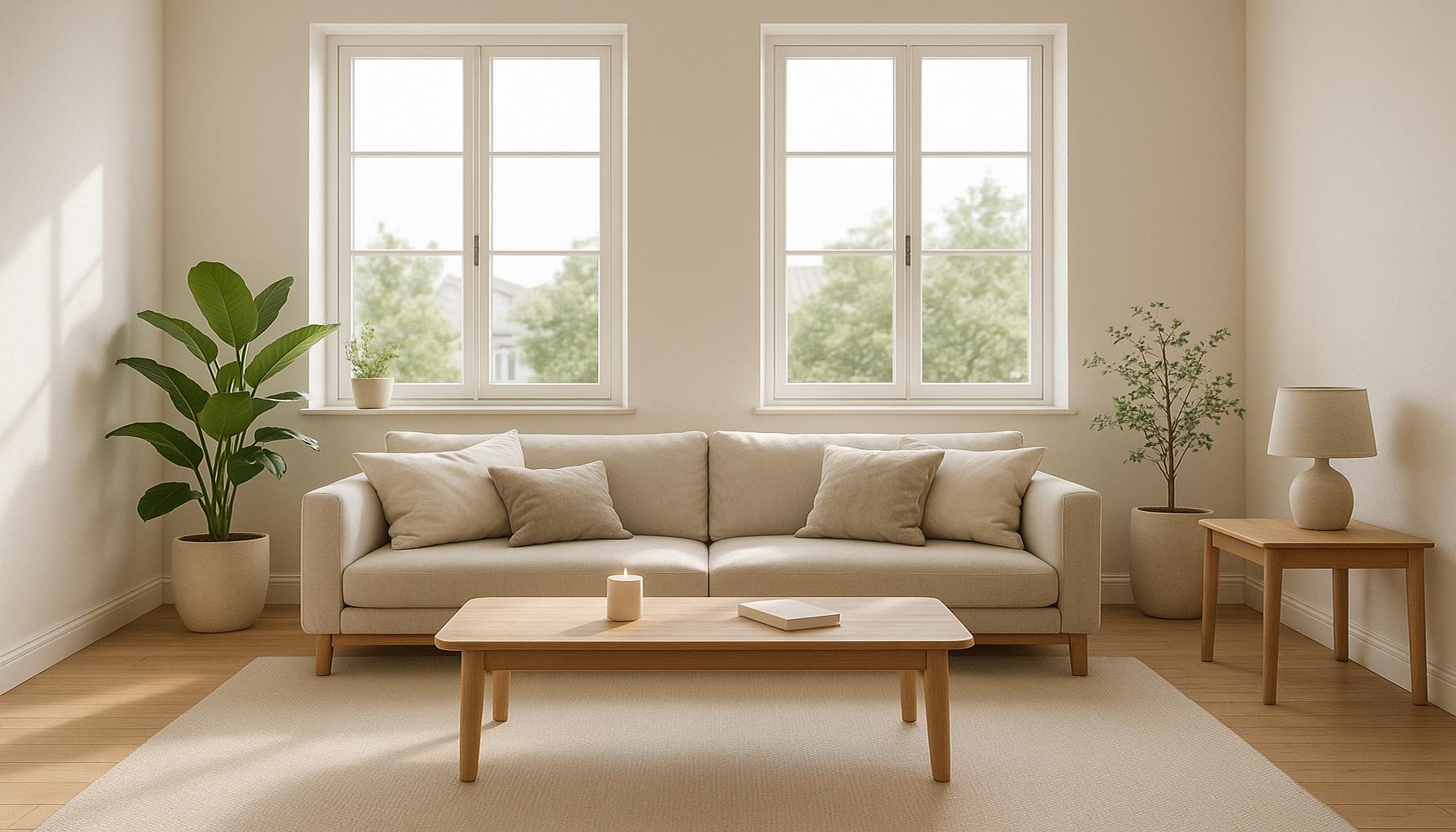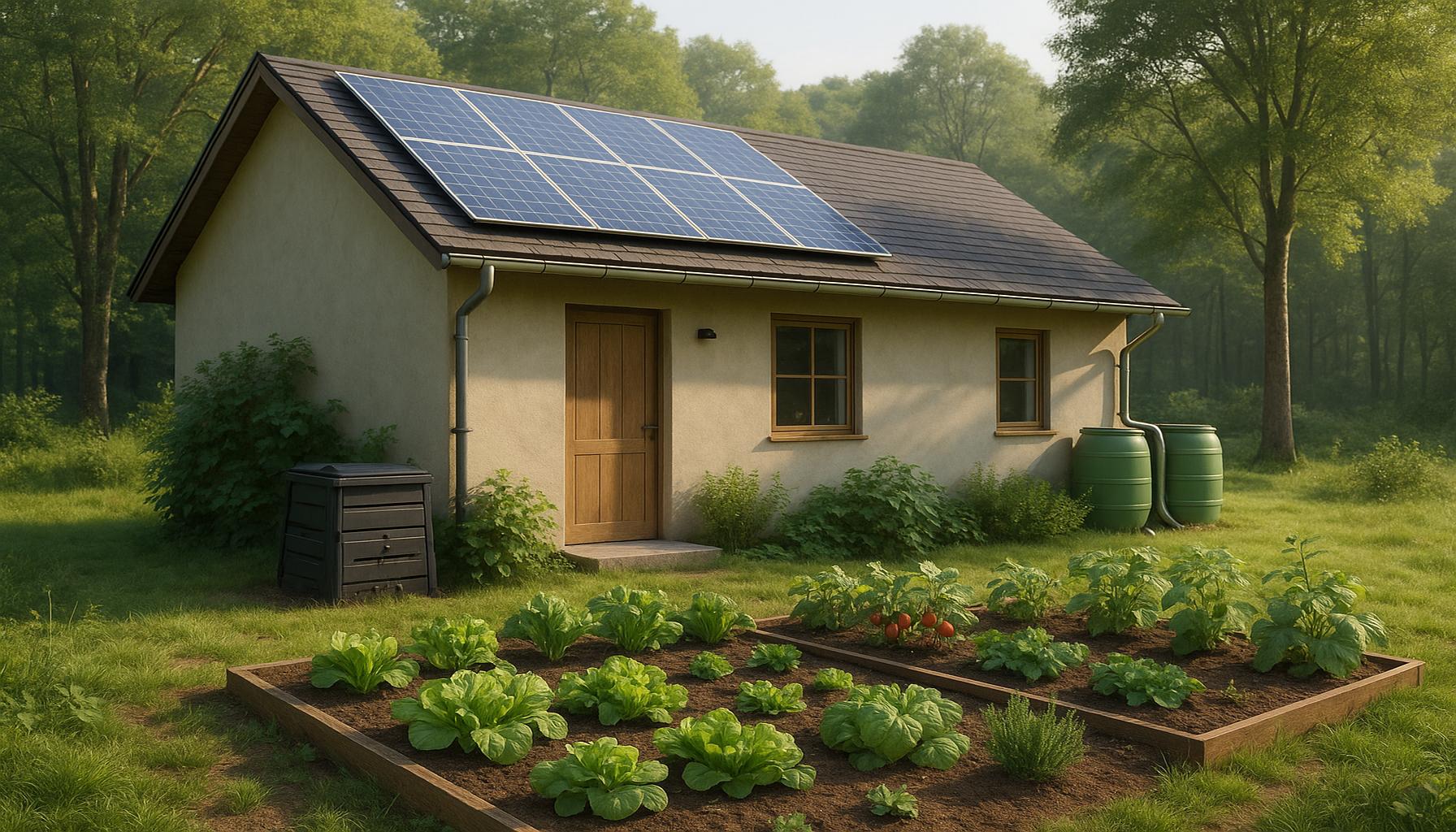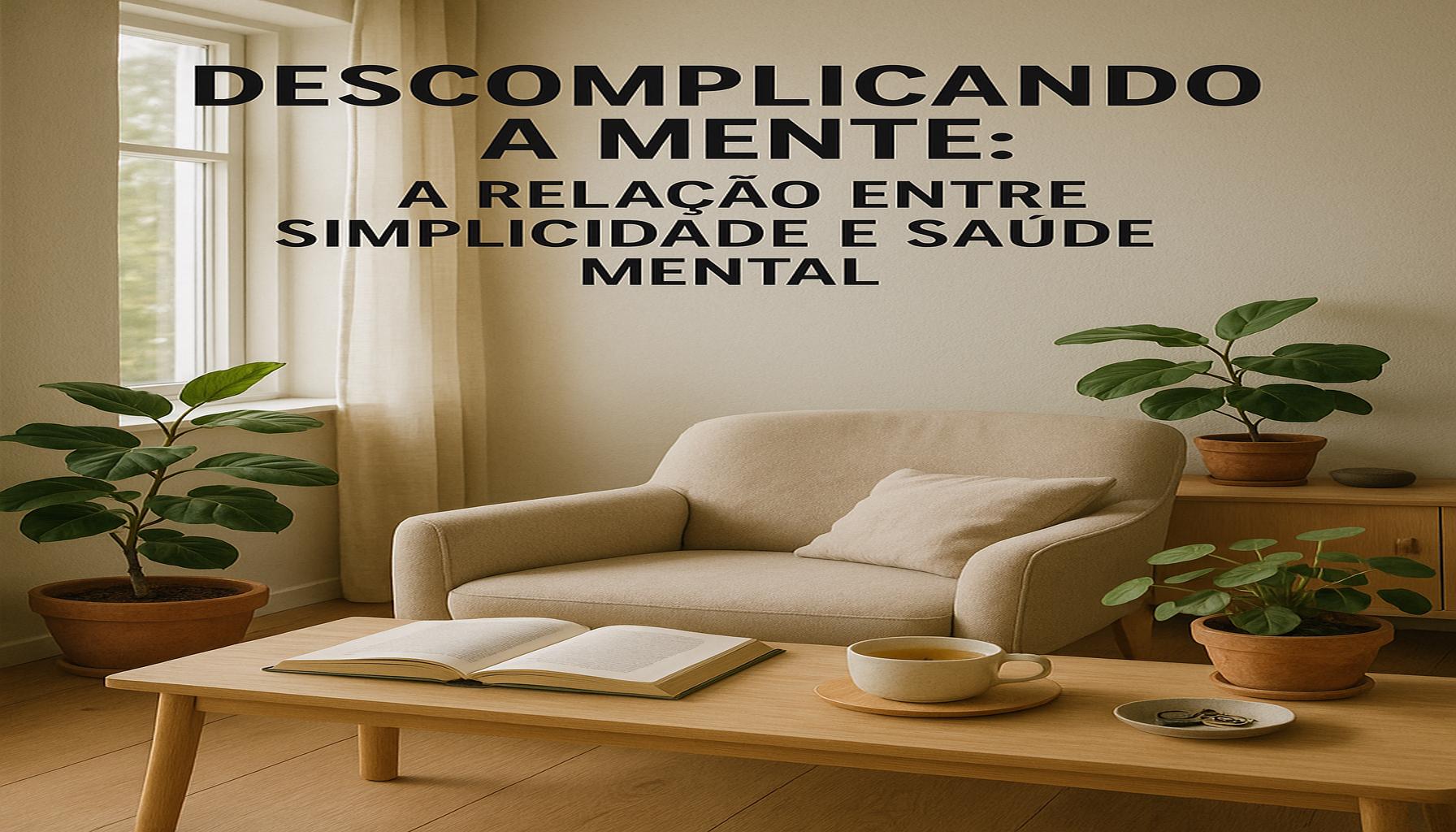Simplicity in Decoration: Creating Calm and Functional Spaces

Finding Peace in Minimalism
In today’s fast-paced world, creating calm and functional spaces through simplicity in decoration is more important than ever. The incessant barrage of stimuli can leave individuals feeling overwhelmed and distracted, making it difficult to focus and find inner peace. As a result, decluttering our environments has become not just a trend but a necessity for improved mental well-being and productivity. But how can we effectively achieve this balance of serenity and function in our daily lives?
Key Elements of Simplicity in Decoration
To embark on the minimalist journey, it is essential to focus on a few key principles that define simple yet effective decoration:
- Neutral Color Palettes: Soft whites, tans, and greys not only create a soothing backdrop but also instill a sense of calm and spaciousness. For instance, a living room painted in light grey can make the space feel airy and open, encouraging relaxation after a long day.
- Quality Over Quantity: Investing in fewer, high-quality pieces that stand out is a core tenet of minimalism. A well-crafted wooden table can serve as a central piece in a room, adding charm and functionality. For example, instead of filling a space with multiple cheap decorative items, choose one striking artwork that complements the overall design.
- Functional Furniture: Opt for multi-functional items that maximize utility. Pieces like a coffee table with built-in storage or a sofa bed can help maintain cleanliness while offering practical solutions for compact living spaces, particularly relevant in urban environments where space is at a premium.
- Natural Elements: Incorporating plants and natural materials brings the outdoors in and helps foster a connection with nature. A few potted plants not only purify the air but also add a touch of vibrancy, enhancing the tranquil ambiance of a home.
These elements work together to foster an environment where peace and functionality coexist. The underlying principle of minimalism is to eliminate distractions, drawing attention to the beauty and balance found in simplicity. As you embark on this journey, remember that every detail counts and can contribute to a serene atmosphere.
Exploring Simplicity in Your Own Space
Regardless of whether you live in a bustling city apartment or a quiet suburban home, there are always opportunities to embrace simplicity. For example, tackling a cluttered closet can not only create physical space but also promote mental clarity. Discover how even small adjustments, like swapping out busy patterns for more cohesive designs or eliminating unnecessary furniture, can transform your space into a tranquil haven.
Stay tuned as we delve deeper into each aspect of this decor philosophy. In upcoming sections, we will uncover practical tips and inspiring ideas to help you create your ideal space filled with calm and functionality. By understanding the principles of minimalism and incorporating them into your life, you can cultivate an oasis of peace amid the chaos of modern living.
DISCOVER MORE: Click here to enhance your productivity
Embracing the Fundamentals of Minimalism
In the pursuit of creating spaces that exude calm and functionality, understanding the fundamentals of minimalism becomes crucial. This approach to decoration invites individuals to evaluate their surroundings with a discerning eye, ultimately shaping a home that reflects tranquility and mindful living. As we unpack the core principles of simplicity in decoration, it’s essential to recognize how these elements can harmonize to transform ordinary spaces into serene retreats.
Intention Behind Every Choice
One of the hallmarks of minimalist decoration is the notion of intentionality. Each item in a room should serve a purpose, evoking emotion or functionality rather than merely occupying space. To help you cultivate this mindful approach, consider these guiding questions:
- Does this piece serve a specific function? If yes, it enriches the environment. If not, it may be time to part ways.
- How does this item make me feel? Items that evoke positive emotions contribute to a peaceful atmosphere.
- Is this piece aligned with my personal aesthetic? Consistency in style tends to create harmony throughout a space.
Reflecting upon these questions when selecting decor can ensure that your space not only looks cohesive but also supports your mental clarity and emotional well-being. It’s about curating an environment where less truly is more.
The Power of Lighting
Another crucial aspect of simplicity in decoration lies in the manipulation of light. Natural light, in particular, plays a vital role in creating calming spaces. Large windows that allow sunlight to flood a room can elevate mood, energize, and make the environment feel more expansive. Consider these tips to improve your lighting:
- Window Treatments: Light, airy curtains or blinds allow natural light to filter in while providing privacy.
- Layered Lighting: Use a combination of ambient, task, and accent lighting to create visual interest without overwhelming the senses.
- Choose Warm Tones: Opt for warm white bulbs to induce a cozy and inviting atmosphere.
By balancing natural and artificial lighting, you can enhance the tranquility of your space while effectively illuminating it.
Decluttering Strategies for Maximum Impact
As we strive for simplicity, decluttering serves as a cornerstone of effective decoration. It’s important to not only clear items that are unnecessary but also to reevaluate what we truly need. This process can benefit from a few strategic methods:
- The One-Year Rule: If you haven’t used an item in the past year, consider donating or recycling it.
- The Four-Box Method: Designate boxes for trash, donate, keep, and relocate to categorize and simplify your belongings.
- Daily Maintenance: Make it a habit to declutter a small area daily, ensuring things don’t pile up over time.
Implementing these techniques can lead to noticeable improvements in your space. A decluttered home is not just visually appealing but also psychologically liberating, clearing the way for calm and mental clarity. As we continue to explore the world of minimalist decoration, remember that each change, no matter how small, contributes to an overall sense of peace and functionality in your living environment.
| Advantages | Description |
|---|---|
| Decluttered Aesthetics | Promotes a serene environment by eliminating distractions. |
| Enhanced Functionality | Encourages organization, making daily tasks more efficient. |
| Improved Mental Wellness | Calm spaces can reduce stress and promote relaxation. |
| Timeless Appeal | Simplicity never goes out of style, ensuring longevity in decor. |
The aesthetic of simplicity in decoration holds a multitude of benefits, paving the way for calm and functional spaces that can significantly enhance one’s quality of life. By focusing on decluttered aesthetics, one can create serene environments that help ameliorate the chaos of daily life. Emphasizing enhanced functionality, it allows for seamless movement within spaces, making daily tasks smoother and more efficient.Moreover, simplified spaces have been shown to improve mental wellness, as they foster an atmosphere of tranquility and peace, reducing stress levels and encouraging relaxation. Timeless appeal is another remarkable aspect of this decorative approach, making straightforward designs highly desirable as they tend to transcend fleeting trends. Embrace the harmony of simplicity to transform not just your spaces, but your entire living experience.
DISCOVER MORE: Click here to learn about minimalism
The Art of Color Selection
Color is a fundamental element in any space that can wield significant influence over our emotions and perceptions. In minimalist decoration, the choice of color can either enhance a sense of tranquility or disrupt it. Opting for a neutral palette can create a soothing backdrop that promotes calmness, allowing for a streamlined aesthetic that feels cohesive and expansive. Consider these strategies when selecting colors for your space:
- Monochromatic Schemes: Using varying shades of a single color can create depth without introducing visual chaos. Soft greys, whites, and beiges can provide sophistication while remaining understated.
- Pops of Color: While minimizing clutter, introducing one or two bold accent colors can offer liveliness. A vibrant artwork or statement piece can become a focal point without overwhelming the room.
- Natural Inspirations: Earthy tones drawn from nature, such as greens, browns, and soft blues, can connect your space with the outside world, fostering a sense of serenity.
Thoughtful color selection supports the minimalist ethos, ensuring each hue is chosen for its emotional impact and contribution to the overall atmosphere.
Furniture with Purpose and Form
In the minimalist approach, furniture is not merely functional but also an opportunity for artistic expression. Choosing furniture that embodies simplicity in form can greatly enhance both the visual appeal and functionality of a space. When selecting your furnishings, consider these criteria:
- Multi-Functionality: Invest in pieces that serve multiple purposes, such as a coffee table with storage or a bed with built-in drawers. This minimizes the need for excess furniture, keeping the space open and airy.
- Quality over Quantity: Focusing on fewer high-quality pieces rather than numerous low-quality items will improve longevity and maintain a refined look.
- Defined Lines and Shapes: Streamlined, geometric forms often create a tranquil environment. Look for furniture designs that embrace clean lines and a minimalistic silhouette.
When you prioritize functionality in your furniture choices, every piece can enhance the utility of your space while elevating its aesthetic harmony.
The Role of Textiles
Textiles in simplicity-driven design play a subtle yet significant role in enhancing a sense of calm and comfort. The choice of fabrics, patterns, and textures can transform a space while keeping it grounded in simplicity. Here are some considerations for integrating textiles effectively:
- Natural Fibers: Opt for textiles made from materials like cotton, linen, or wool. These fabrics not only add softness but also breathe well, making the space feel warm and inviting.
- Texture Variation: Introducing different textures can create visual interest without overwhelming the senses. Consider layering different fabrics, like a wool throw on a cotton sofa, to maintain a cohesive yet engaging aesthetic.
- Simplicity in Patterns: Choose subtle patterns or solid colors rather than busy designs. Patterns can easily clash in a minimalist environment, thus, embracing simplicity through understated designs keeps the focus on the overall ambiance.
By thoughtfully incorporating textiles, you can add depth and comfort to your minimalist space, fostering a peaceful retreat conducive to relaxation and productivity.
Nature as a Design Element
Integrating elements from nature introduces a sense of calm and grounding to any living space. Minimalist design often embraces the concept of bringing the outdoors inside, which can be particularly beneficial in urban environments. Here’s how to harness nature in your design:
- Indoor Plants: Incorporating indoor greenery can purify the air and enhance mood. Opt for low-maintenance varieties like succulents or snake plants, which require minimal care while adding a touch of life.
- Natural Materials: Utilize raw materials such as wood, stone, and bamboo in your decor. These elements not only contribute to the aesthetic but also remind us of our connection to nature.
- Natural Light Access: Design spaces to optimize access to outdoor views, whether through large windows or strategic placements of mirrors that reflect natural light.
Utilizing natural elements in design will calm the senses, promoting an overall sense of well-being in your living areas and a functional environment aligned with the principles of simplicity.
DISCOVER MORE: Click here to declutter your digital life
Conclusion: Embracing Simplicity for Serenity and Functionality
The journey toward creating calm and functional spaces through simplicity in decoration reflects a deeper understanding of our environments and their impact on our well-being. As we’ve explored, integrating a neutral color palette, choosing multi-functional furniture, and incorporating natural textiles serves not only to rid our spaces of visual clutter, but also enhances our emotional responses to these environments. By embracing these principles, we foster spaces where tranquility reigns, allowing individuals to unwind and recharge amidst the often chaotic pace of modern life.
Moreover, the importance of engaging with nature as a design element cannot be overstated. Whether it’s through the inclusion of indoor plants, the use of natural materials, or maximizing natural light, these elements bridge the divide between our indoor and outdoor worlds, inviting a sense of peace and grounding that any space can benefit from. Ultimately, simplicity in decoration is not merely about reducing excess but about curating a thoughtful selection of elements that create harmony and functionality.
In this quest for simplicity, consider how each aspect of your space contributes to a holistic experience. Reflect on what truly matters and prioritize those elements that evoke a sense of calm and purpose. As you embark on this transformative journey, you will discover that the beauty of minimalism lies in its ability to illuminate the essence of living—where less is often more, enriching both our spaces and our lives.


